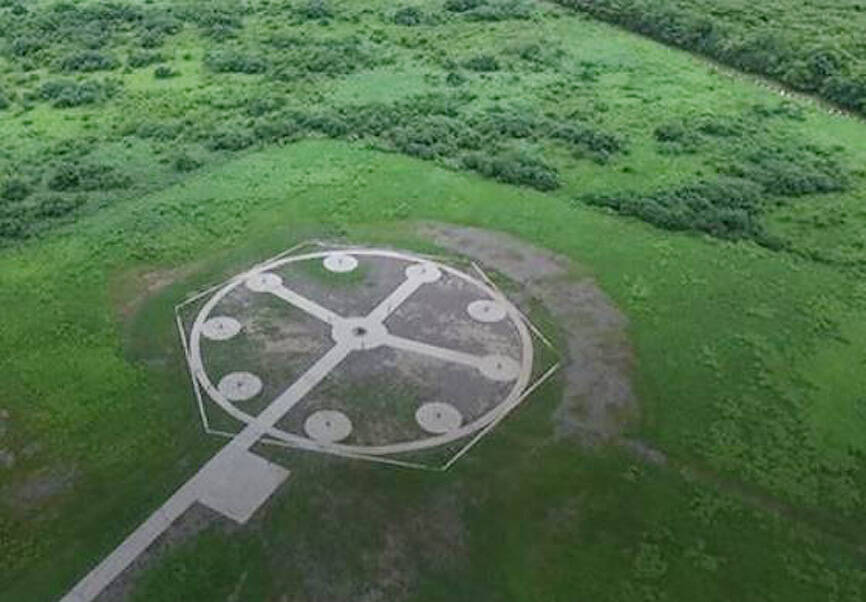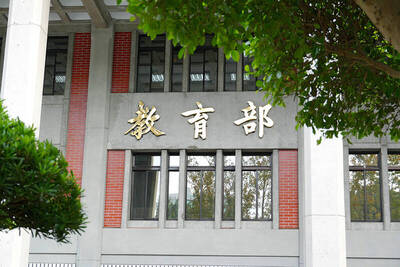A new high-frequency radio-spectrum monitoring system in Pingtung County’s Nanjhou Township (南州) has enhanced the government’s ability to quickly identify the source of radio interference, the National Communications Commission (NCC) said.
The commission in 2020 began building a new monitoring system in the southernmost part of the country after the manufacturer of the original system stopped producing components for it, the commission said.
The new radio-spectrum monitoring system, which was completed in 2021, cost nearly NT$90 million (US$2.92 million at the current exchange rate), it said.

Photo courtesy of the National Communications Commission
The commission earlier this month allowed reporters to visit the Pingtung workstation that houses the monitoring system for the first time. Personnel entering the facility are restricted, as it is part of key infrastructure that must be protected for national security reasons.
NCC Deputy Chairman and spokesman Wong Po-tsung (翁柏宗) said that Taiwan has two sites for the new high-frequency radio-spectrum monitoring system: one in Pingtung County and one in Taoyuan.
“The system has two functions: First, it can identify potential sources of radio interference after we receive complaints. Second, it can monitor how a specific radio frequency band is used when the government is planning the designation of a radio spectrum,” he said.
Wong said that the new system monitors frequency use from 300 kilohertz (kHz) to 30 megahertz (MHz), which is mainly used by AM radio stations and fishing boats.
“If any one of them [the authorized users] complains about interference from other users, the new system would be able to identify potential sources of such interference,” he said.
The system monitors a wider range than the old system, which was limited to 500kHz to 30MHz, the commission said.
It can detect radio signals from one of Japanese public broadcaster NHK’s station about 2,300km away, the NCC said.
The accuracy of the system’s direction finder is less than 1 root mean square (RMS), while the old system has a direction finder accuracy of less than 2RMS, it said.
The system uses loop antennas, rather than monopole antennas, which broaden the reception of signals, the commission said.
The loop antennas are installed in a circular array, with a radius of about 25m, it added.
Nine sets of antennas are set up to detect signals from 360°, it said, adding the collected data can then be processed and calculated by computers to find the source.
The new system has a real-time frequency of 30MHz, greater than the old system’s 10MHz, and a delay time of 2 milliseconds, compared with the old system’s 10 milliseconds, it said.

The Ministry of Education (MOE) is to launch a new program to encourage international students to stay in Taiwan and explore job opportunities here after graduation, Deputy Minister of Education Yeh Ping-cheng (葉丙成) said on Friday. The government would provide full scholarships for international students to further their studies for two years in Taiwan, so those who want to pursue a master’s degree can consider applying for the program, he said. The fields included are science, technology, engineering, mathematics, semiconductors and finance, Yeh added. The program, called “Intense 2+2,” would also assist international students who completed the two years of further studies in

The brilliant blue waters, thick foliage and bucolic atmosphere on this seemingly idyllic archipelago deep in the Pacific Ocean belie the key role it now plays in a titanic geopolitical struggle. Palau is again on the front line as China, and the US and its allies prepare their forces in an intensifying contest for control over the Asia-Pacific region. The democratic nation of just 17,000 people hosts US-controlled airstrips and soon-to-be-completed radar installations that the US military describes as “critical” to monitoring vast swathes of water and airspace. It is also a key piece of the second island chain, a string of

Taiwan will now have four additional national holidays after the Legislative Yuan passed an amendment today, which also made Labor Day a national holiday for all sectors. The Chinese Nationalist Party (KMT) and Taiwan People’s Party (TPP) used their majority in the Legislative Yuan to pass the amendment to the Act on Implementing Memorial Days and State Holidays (紀念日及節日實施辦法), which the parties jointly proposed, in its third and final reading today. The legislature passed the bill to amend the act, which is currently enforced administratively, raising it to the legal level. The new legislation recognizes Confucius’ birthday on Sept. 28, the

A magnitude 5.9 earthquake that struck about 33km off the coast of Hualien City was the "main shock" in a series of quakes in the area, with aftershocks expected over the next three days, the Central Weather Administration (CWA) said yesterday. Prior to the magnitude 5.9 quake shaking most of Taiwan at 6:53pm yesterday, six other earthquakes stronger than a magnitude of 4, starting with a magnitude 5.5 quake at 6:09pm, occurred in the area. CWA Seismological Center Director Wu Chien-fu (吳健富) confirmed that the quakes were all part of the same series and that the magnitude 5.5 temblor was